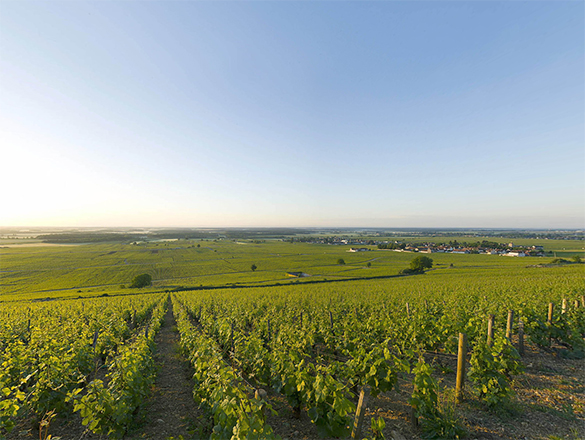

The vineyards of Bourgogne produce some great wines with a historical and international reputation. However, the region is not simply limited to its iconic appellations. In addition to its Village Premier Cru and Grand Cru AOCs, it also produces a range of wonderful Régionale and Village appellations to explore.
You will also find a full list of the Bourgogne’s Climats and lieux-dits on this page.
Check out the complete list of the 84 Bourgogne appellations.
However, your exploration has only just begun. Bourgogne wines have never before offered such high quality. Besides our range of internationally celebrated wines, try some of our lesser-known appellations where there are lots of surprises in store.
And for a fun way to find out more about the wines on offer, try out our “Which Bourgogne wine is right for me?” quiz, or check out Bourgogne Maps to take an interactive tour of the region.
Village appellation
VIGNOBLE DE LA CÔTE DE NUITS
8 décembre 1936
Almost all reds - Pinot Noir.
Whites - Chardonnay and Pinot Blanc.
Area under production*:
1 hectare (ha) = 10,000 m2 = 24 ouvrées.
Reds: 85.90 ha (including 37.96 ha Premier Cru).
Whites: 5.23 ha (including 1.56 ha Premier Cru).
Average annual yield**:
1 hectolitre (hl) = 100 litres = 133 bottles.
Reds: 3,447 hl (including 1,617 hl Premier Cru).
Whites: 221 hl (including 65 hl Premier Cru).
*In 2022 **5-year average, 2017-2021
Appellation Village of the Côte de Nuits region (Côte-d’Or).
This appellation includes 20 Premiers Crus Climats.
Producing commune: Morey-Saint-Denis.
The commune of Morey-Saint-Denis also produces 5 Grands Crus (See
Appellation sheets Nos. 5 and 29).
The appellation MOREY-SAINT-DENIS and MOREY-SAINT-DENIS PREMIER
CRU may be followed on the label by the name of the Climat of origin.

Most of the vineyards are planted with Pinot Noir grapes, although a few parcels are planted with Chardonnay or Pinot Blanc varieties, yielding a rare and interesting white wine, generally quite firm and opulent.
Red: its colour is usually a full, firm, bright ruby, carmine or intense garnet with purplish highlights. The bouquet is partly of black fruits (blackcurrant, bilberry) and partly of red, pitted fruits such as cherries. Variants include bramble, violet, liquorice, and fruits conserved in liquor.
When older it often evokes the “wildwood” scents of game, leather, and moss, even truffle. Sustained and structured, this wine lingers in the mouth without flinching - it has just the right balance between body and fruit. With its rounded tannins and mouth-filling generosity, it sings tenor, so to speak, in the Burgundian choir.

Masculine in character, as one expects from the Côte de Nuits, full and powerful in the mouth, red Morey-Saint-Denis is most at home with meats of equally strong flavours. Its tannins are more likely to bring out the best from a game bird (such as a pheasant) than a piece of veal, for example.
Feathered game, braised or roasted, will succumb smoothly to its meaty texture, and its sustained tannins will continue to make their presence felt until the last succulent, musky mouthful. The tannins, again, will bring out the full quality of a fine rib steak or a nice thick beef blade. Soft-centred cheeses will find in this wine a compatible partner.
Serving temperature: 13 to 15°C.

Rich in Premiers Crus, Morey-Saint-Denis boasts also 5 Grands Crus (Clos de Tart, Bonnes Mares, Clos de la Roche, Clos Saint-Denis, Clos des Lambrays). The appellation forms a bridge, between the wines of Gevrey-Chambertin and those of Chambolle-Musigny. The history of this wine-growing village has in the past been heavily influenced by the powerful religious house of Vergy, the abbeys of Cîteaux and Tart, and by some of the great Burgundian families. Of its wine, Dr. Lavalle wrote in 1855, “it can be said that it lacks nothing”. The AOC status was instituted in 1936.

The vines grow on limestone and clay-limestone soils dating from the Middle Jurassic: white Bathonien Oolite up-slope and fossiliferous Bajocien limestone at the foot. The vineyards are east-facing and are at altitudes of 220-270 metres. Immediately below the village the slopes are differently oriented and the soil is more marly.
